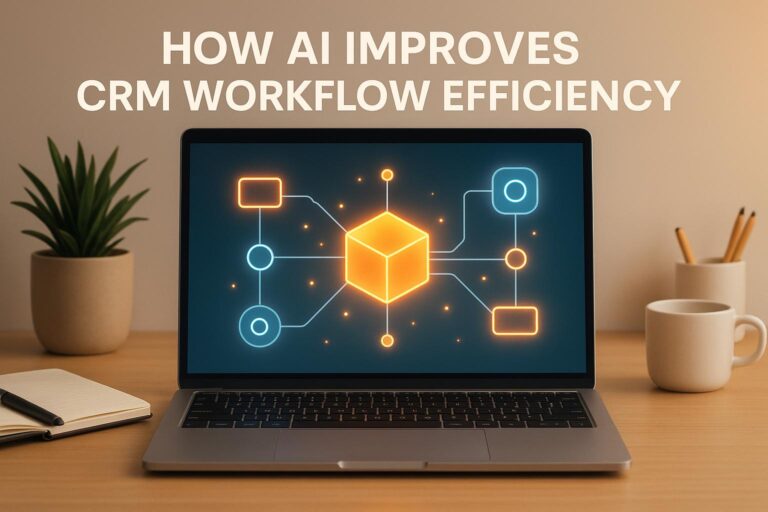Businesses are always on the lookout to better their customer engagement. AI-driven customer interaction analysis marks a new era. It uses AI to study how customers act, feel, and what they like. This gives companies detailed insights to act on. Unlike old ways of getting feedback, AI analysis is a big step forward. It understands complex data. This helps firms tailor their strategies to give users what they want.
Big names like Netflix use AI to decide what content to make. This keeps their shows in line with what people want to watch. AI helps predict what customers will need next. It also answers their queries in real time. This leads to happier customers who stick around longer. Thus, using AI to understand and engage with customers is key. It helps businesses grow strong and responsive relationships with their users.
Key Takeaways
- AI-driven analysis enhances proactive customer service by predicting needs and behaviors.
- Improved customer retention through personalized recommendations and identifying potential churn.
- Advanced sentiment analysis through AI monitors satisfaction and boosts customer engagement levels.
- Integration of natural language processing and voice-recognition technology elevates customer interactions.
- Real-time data processing and predictive analytics powered by AI inform strategic decision-making.
- Data privacy and clear communication with customers are key to trust-building with AI systems.
Understanding AI-Driven Customer Interaction Analysis
Today, the way companies talk to customers is changing a lot because of new tech. AI and predictive modeling play a big part in this. They help businesses get better at figuring out what customers want and how to talk to them.
Definition and Scope
So, what is AI-driven customer interaction analysis? It’s when companies use AI to look at and guess what customers might do next. They get this info from lots of different places. By using things like machine learning, they can do more than just see trends. They can predict what customers need next.
Big companies like Amazon and Netflix show us how powerful AI can be. They use it to make sure every customer gets a personal touch.

Importance in Modern Business
In today’s business world, using AI in customer service is super important. Research shows companies that use AI can work faster and make customers happier. In fact, 63% of service pros who were asked said it makes a big difference.
And it’s not stopping there. Gartner says that by 2025, 80% of support teams will use AI. This shows it’s a key part of changing with the digital world. Digital transformation is the big goal.
| Benefit | Statistics |
|---|---|
| Increased Customer Service Efficiency | Up to 30% cost reduction (IBM) |
| Enhanced Customer Experience | 80% adoption by support organizations by 2025 (Gartner) |
| Annual Cost Savings | $11 billion across multiple sectors (Juniper Research) |
Companies are really pushing for AI and better analysis. They want to stay competitive and relevant as the market keeps changing.
Key Technologies Behind AI-Driven Analysis
Artificial intelligence has changed how companies talk to their customers. At its heart, machine learning, NLP, and advanced data analytics are key. These tools make work smoother and help keep customers happy and engaged.
Machine Learning Algorithms
Machine learning lets systems learn from data and make decisions with little help from humans. It’s vital for figuring out what customers do and tailoring interactions. This is based on what we know about them already.
Natural Language Processing
NLP helps machines understand us. It lets AI tools like chatbots and virtual assistants chat with customers easily. This tech is crucial for feeling out moods, pulling insights from talks, and giving answers that make sense in the situation.
Data Analytics Platforms
These platforms use AI to sift through huge data loads super fast. They let companies quickly make choices that are backed by data. This is key to better engaging customers and making work processes more efficient.
| Technology | Benefits | Applications |
|---|---|---|
| Machine Learning | Adapts and improves continuously | Personalization algorithms |
| NLP | Understands and generates human language | Chatbots, Sentiment Analysis |
| Data Analytics | Processes large datasets efficiently | Customer behavior analytics, Predictive insights |
Looking into how artificial intelligence boosts customer service shows it’s key. Adding machine learning, NLP, and data analysis to your business isn’t just nice to have. It’s crucial for staying ahead in today’s quick-moving market.
Benefits of Implementing AI in Customer Interactions
Adding Artificial Intelligence (AI) to customer service changes the game. It meets the growing need for personal and quick service. Companies using AI see big improvements in how they connect with customers and run their operations. We’ll look at these big changes and the real outcomes from using AI in customer service.
Enhanced Personalization
AI makes communication with customers much better. 54% of consumers like brands more when they get personal treatment. AI looks at loads of data to give people exactly what they want. This approach makes customers more loyal and happy.

Improved Customer Insights
AI tools really understand customer behavior by looking at data all the time. 65% of customer experience leaders say AI is a must-have. They help see what customers want before they even ask. This means businesses can be ready and fix problems before they grow.
Here is a table showing what happens when AI helps with customers:
| Statistic | Detail |
|---|---|
| Consumer Favorability | 54% prefer brands using personalized advertising |
| AI in Customer Experience | 65% of leaders see AI as crucial for engagement |
| Chatbot Response Appreciation | 68% of customers value fast chatbot responses |
| AI Adoption Increase | Google reports a 7-fold increase in AI projects |
The table shows that AI really goes beyond what’s expected in making customer service better. The progress in figuring out what will happen next and looking at data quickly is key for good customer service today. It changes how businesses talk to customers, making care more personal and responsive.
Challenges in Adopting AI-Driven Customer Analysis
Moving to AI-driven customer analysis is key for digital transformation. But this journey has its share of hurdles. It’s vital for companies to understand these hurdles as they use data analytics to better customer experiences.
Data Privacy Concerns
Using AI in customer services brings up big data privacy issues. It’s critical to safeguard customer data to avoid fines and losing trust. Today, having strong security is a must-have for any AI compliance solution.
Integration with Existing Systems
Mixing AI with old systems is tough. Sometimes, systems can’t work with new AI tech without big changes. This might mean updating software, teaching staff, and sorting out the budget, raising early costs. Companies must gear up for a possibly long integration time that may hit system function.
Ensuring Data Quality
The success of AI in customer service depends on accurate data. The information fed into AI must be clear, well-ordered, and related. If not, the results will be off. This could lead to bad business choices, damaging relationships and reputation.
Even with these issues, using AI in managing customer relationships is on the rise. It offers better service, cuts operational costs, and boosts customer happiness.
Looking at the financial side, let’s explore the costs and savings of bringing AI into customer service:
| Expense/Cost | Amount ($) |
|---|---|
| Technology Infrastructure | 100,000 |
| Data Acquisition and Preparation | 50,000 |
| AI Development and Implementation | 200,000 |
| Integration Costs | 50,000 |
| Annual Maintenance and Updates | 30,000 |
| Anticipated Cost Savings – First Year | 150,000 |
Future Trends in AI-Driven Customer Interaction Analysis
Artificial intelligence is changing how companies interact with customers. The Zendesk Customer Experience Trends Report 2024 shows that 65 percent of leaders believe AI is key. It goes beyond improving current methods—it rethinks customer service. AI saves businesses 220 hours a month by automating tasks. This shows its power to transform customer service efficiency.
Evolution of AI Technologies
Innovations in predictive analytics and natural language processing (NLP) lead AI advancements. These allow companies like Amazon and Starbucks to customize experiences and predict what customers want. This not only boosts sales but also improves inventory and planning. McKinsey reports that AI could add $25.6 trillion to the global economy. So, investing in AI is seen as crucial for staying competitive.
The Role of Customer Feedback
Customer opinions are vital to AI improvement. The Zendesk report says 80 percent of leaders will spend more on AI for better insights. AI learns from feedback to enhance customer service and provide tools for staff training and sentiment analysis. This keeps AI in tune with what customers prefer, ensuring a smooth and smart service.
Integration with Multichannel Strategies
Combining AI with multichannel strategies creates a unified customer journey. AI works across different platforms to provide constant, seamless service. This can be through virtual assistants like Siri and Alexa, or chatbots that reflect the brand’s voice. This integration helps use customer interaction data to improve future services. Brands like Sephora benefit from this approach, using apps that mix AI and AR for better shopping experiences.
FAQ
What is AI-Driven Customer Interaction Analysis?
AI-driven customer interaction analysis uses machine learning and data analytics to understand customer behaviors. It helps businesses improve how they engage with customers. Insights gained can improve customer services and engagement.
Why is AI-Driven Customer Interaction Analysis important in modern business?
It helps companies quickly adapt to changing consumer needs. Companies can tailor their strategies to stay competitive. This analysis is key for predicting customer behaviors and refining marketing efforts.
What technologies are behind AI-Driven Customer Interaction Analysis?
Technologies like machine learning algorithms aid in system improvement. Natural language processing (NLP) helps understand human language. Data analytics platforms manage large datasets for actionable insights.
How does AI enhance personalization in customer interactions?
AI predicts customer preferences and customizes responses thus improving satisfaction. Personalizing services leads to more relevant customer engagement. This strengthens customer loyalty over time.
What improved customer insights can be gained from AI?
AI reveals hidden customer behavior patterns and predicts trends. It assesses sentiments, providing a deep understanding of customer needs. These insights guide better product development and service strategies.
What are the main challenges in adopting AI-Driven Customer Interaction Analysis?
Challenges include data privacy concerns and integrating AI into current systems. Ensuring high data quality for reliable analytics is also crucial.
How is Artificial Intelligence expected to evolve in the area of customer interaction analysis?
AI will likely become more intuitive, offering detailed insights and efficiency. It will predict customer needs more accurately. This means personalized engagement will improve across different platforms.
What role does customer feedback play in the advancement of AI technologies?
Customer feedback is vital for creating effective AI systems. It helps AI learn and adapt to better meet customer needs. This ensures customer service strategies continue to evolve.
How important is the integration of AI with multichannel strategies?
Very important. AI integration ensures customers have a seamless experience across all channels. It enhances customer interaction analysis and engagement, leading to efficiency and effectiveness.



